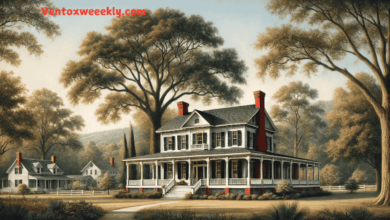Kandace Clifton Graphic Design: Merging Creativity with Archival Science

In today’s digital age, graphic design is not merely a tool for visual aesthetics; it’s a medium for storytelling, communication, and preserving history. One standout professional making waves in this interdisciplinary space is Kandace Clifton, a visionary graphic designer and archivist whose work seamlessly integrates these fields. Her efforts not only preserve historical artefacts but also present them in engaging, accessible ways through her unique application of graphic design principles. In this article, we’ll explore Kandace Clifton’s journey, her innovative contributions to graphic design and archival science, and the lasting impact of her work on the digital world.
Early Life and Background
Kandace Clifton began her career as a graphic designer with a passion for storytelling. Her background in both art and technology allowed her to see beyond traditional design practices, blending artistic vision with technical precision. While graphic design is often perceived as an industry focused solely on branding and marketing, Clifton envisioned using design as a bridge between creativity and historic preservation.
From her early days, Clifton was deeply involved in archival practices, which laid the foundation for her future innovations. She recognized the need to preserve history in visually appealing and educational ways. This forward-thinking approach set her apart and led her to explore integrating graphic design into archival practices.
Graphic Design Meets Archival Science
What sets Kandace Clifton apart from other graphic designers is her ability to merge traditional archival practices with modern graphic design techniques. Her work emphasizes the importance of maintaining the integrity of historical records while making them accessible to broader audiences.
In many of her projects, Clifton has applied her graphic design expertise to digital archives, presenting records in visually captivating formats. She believes that design is crucial in how information is consumed and remembered. By visually engaging archives, Clifton enhances user interaction and ensures that historical documents are more than just static records—they become interactive experiences that resonate with modern audiences.
Notable Projects and Achievements
Fashion Archiving at Parsons Paris
One of Clifton’s most renowned contributions is her work in fashion archiving at Parsons Paris. Here, she managed the library of fashion resources, curating and organizing an extensive collection of books, magazines, and journals. Much like graphic design, fashion is an industry steeped in visual elements. Clifton’s background made her a perfect fit for ensuring these materials were preserved and easily accessible to students and researchers.
In addition to her library management work, Clifton Performed an essential part in the “Anatomy of the Fashion Museum” exhibition at the prestigious Palais Galliera. Her innovative approach allowed the public to see how fashion artefacts are curated, preserved, and displayed. This project demonstrated Clifton’s ability to blend design and archiving, offering an educational and visually stimulating experience.
Digital Archiving Initiatives
Clifton is also at the forefront of digital archiving, where she has made significant advancements in creating digital repositories for historical records. Her work addresses critical challenges in the field, such as data corruption, outdated hardware, and the ethical considerations of digital access. By creating interactive platforms, Clifton ensures that these records are preserved, easy to navigate, and engaging to explore.
One of her groundbreaking contributions is developing interactive digital archives that allow global access to historical documents. Through these platforms, users can quickly delve into the past, viewing artefacts that would otherwise be restricted to physical archives. Clifton’s digital archives are designed with usability, ensuring the information is preserved, relevant, and engaging in a rapidly advancing digital world.
The Role of Graphic Design in Archival Practices
At the heart of Clifton’s work is her belief that graphic design is essential for the presentation and usability of archival materials. Traditional archiving methods often focus solely on preserving the content, with little attention to how it is presented. Clifton’s approach challenges this by applying design principles that make the archives more accessible, visually appealing, and educational.
For instance, in her digital archiving projects, Clifton uses graphic design to create user-friendly interfaces that enhance the overall experience. Color schemes, typography, and layout design significantly affect how users interact with the material. These elements help guide the user through vast amounts of information, making it easier to digest and retain.
Additionally, her work with physical archives, such as fashion and cultural artefacts, demonstrates how graphic design can bridge the gap between the past and the present. By curating informative and visually captivating exhibits, Clifton engages audiences who might not have otherwise been interested in archival materials.
Innovation in the Digital Age
Kandace Clifton’s contributions extend beyond the fusion of graphic design and archiving. Her work is a testament to the importance of innovation in preserving history. Clifton emphasizes the need for continuous adaptation in both fields in the age of rapid technological advancements.
For example, her approach to digital preservation addresses critical challenges, such as ensuring that digital records remain accessible over time. With the ever-present risk of data loss due to technological changes, Clifton has implemented methods that safeguard these archives, ensuring they are preserved for future generations. Her work in this area sets new benchmarks for the archiving profession, particularly in maintaining the longevity of digital records.
Impact on the Industry
Kandace Clifton’s unique combination of graphic design and archival science has set her apart as a trailblazer in both fields. By integrating design into archival practices, she has introduced new ways to interact with historical documents. This helps preserve history and makes it accessible and engaging for contemporary audiences.
Her work has influenced how institutions manage their archives, particularly in educational settings. Clifton’s approach demonstrates that archives are not static entities but evolving collections that benefit from design-driven strategies. By making archives more accessible and engaging, Clifton ensures that history remains relevant and appreciated in the digital age.
Conclusion: Kandace Clifton’s Legacy
Kandace Clifton is redefining the future of both graphic design and archival science. Her forward-thinking approach blends traditional preservation techniques with modern design principles, creating engaging and accessible archives for all to explore. As we move into the digital age, professionals like Clifton remind us of the importance of preserving our history in ways that resonate with future generations.
Through her groundbreaking work, Kandace Clifton continues influencing how we interact with and appreciate historical records. Her innovative fusion of graphic design and archival practices preserves history and breathes new life into it, ensuring the past remains relevant and accessible in an ever-changing world.
In summary, Kandace Clifton’s contributions to graphic design and archival science showcase the power of creativity and innovation in preserving history for future generations. Her work is a testament to how these two disciplines can create lasting, impactful experiences.
FAQs: Kandace Clifton Graphic Design
Who is Kandace Clifton?
Kandace Clifton is a graphic designer and archivist known for merging design with archival science and creating accessible, engaging historical records.
What is Kandace Clifton’s approach to archival science?
Clifton integrates graphic design into archival practices, ensuring historical documents are preserved and visually engaging.
What are Kandace Clifton’s key projects?
Her work includes managing fashion archives at Parsons Paris and developing interactive digital archives for global access.
How does graphic design impact archival science?
Clifton applies design principles to improve the accessibility and usability of archives, making them more engaging for users.
What is Clifton’s vision for the future of archiving?
She envisions archives that are digitally interactive, user-friendly, and enriched by graphic design principles to engage modern audiences.




